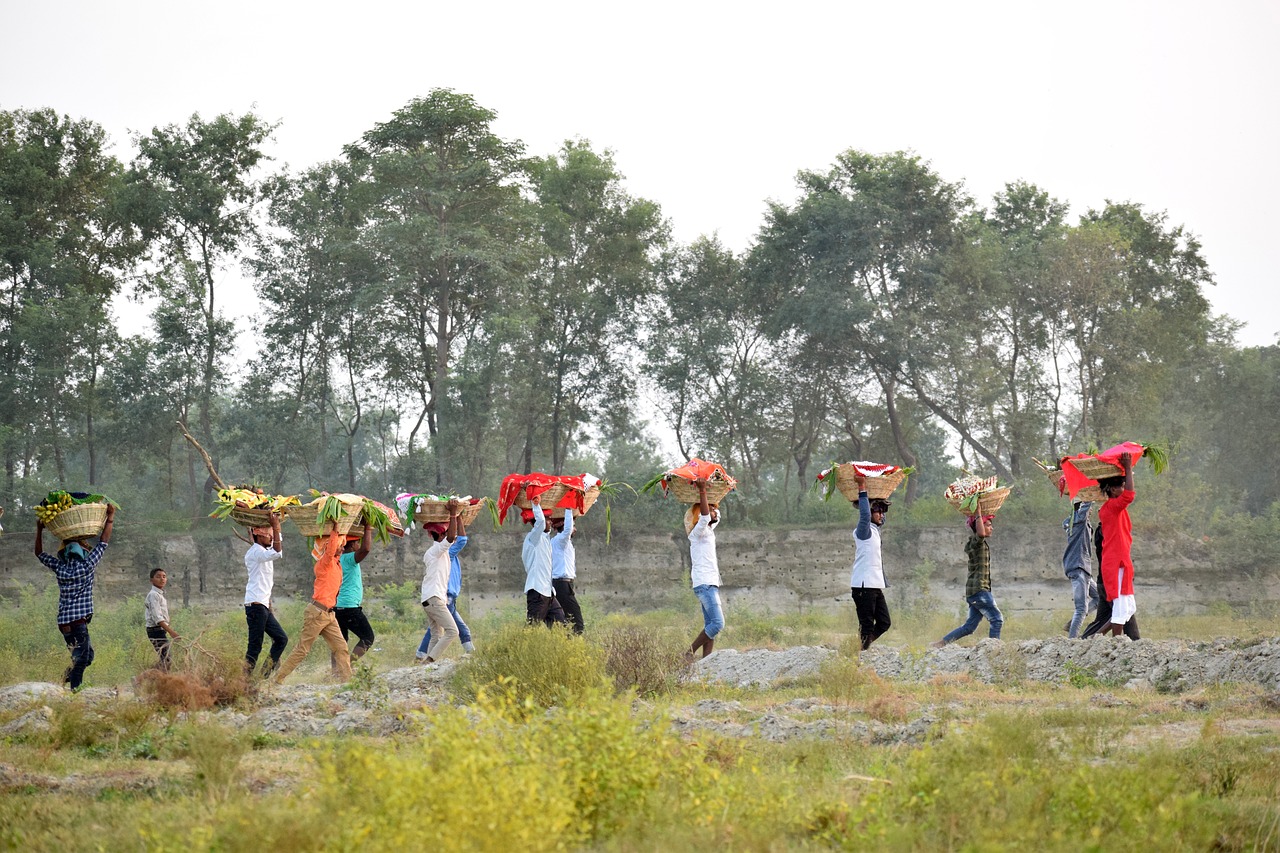The revered Indian festival of Chhath Puja is observed with deep faith and great fervour owing to its ancient legend about the Sun God, Surya and Chhathi Maiya. The cultural significance of Chhath pua is explored in this article through its associated legends and mythology.
The origin of chhath puja lies in ‘Rigveda’, which is the oldest scripture of vedas. It is also said that this festival was done in the past many centuries hence making it a meaningful Indian spiritual legacy.
The Legend of Draupadi
Among many legends about Chhath Puja it is one of the most widespread ones – the legend of Draupadi, a heroine of famous Indian epic Mahabaharata. In the legend, Droupadi, the wife of the Pandavas, faced serious challenges when they were in the forest exile. Lord Krishna gave her advise that she observe a daylong fast called Chhath vratta. Following her mother-in-law’s advice, Draupaidi conducted the chhath puja with total commitment. This ensured that her problems were sorted out and as a consequence Pandavas’ exile drew to an end. #
Draupadi’s dedication to Lord Surya is illustrated in the story behind Chhath Puja, which emphasizes how faith can help one overcome their struggles and even obtain benefits from it.
The Myth of Lord Rama
Legendarily, Chhath Puja is attributed to Lord Rama, the central hero in one of the greatest epics, the Ramayana. Following defeat of Ravana and liberation of Sita, Lord Rama with Sita and his brother Lakshmana purified their sins of killing a Brahmin in Chhath Puja on the banks of River Saryu. Devotees congregate near various water bodies and pray to Lord Sun on this day.
The Tale of King Priyavrat
Besides, an old story of King Priyavrt is also included into the storytelling component of Chhath puja in ancient texts. The celebration of Chhath Puja was greatly governed by King Priyavrata, whose reign was known as fair and virtuous. His father was the famous king Nahusha, while his daughter was Sati Anusuya, a renowned figure in Indian folklore. The cultural and spiritual value of the festival is demonstrated in the deep faith that King Priyavrat had in Chhath puja.
The Story of Chhathi Maiya
Chhathi Maiya, the companion/wife of Lord Surya, plays an important role during Chhath Puja. U There is a lot of mystery and myth about her story. Chhathi Maiya is also considered to be Lord Brahma’s daughter – the god and creator of the universe. She got married to Lord Surya as a result of her persistence into penance and power of devotion she possessed. Chhathi Maiya forms part of the Chhath Puja, where people wish for healthy and abundant lives.
Sun god, Surya: Its significance.
The majorly worshiped deity in Chhath Puja happens to be Lord Surya, the sun god. In the Hindu mythology, the sun is very significant and represents life. Lord Surya is the fountain of energy and vigor, and his blessings are said to be conferring happiness, prosperity and wealth on people. However, it is done to thank him (surya) for granting life sustenance.
Chhath Puja Rituals and Traditions

Chhath Puja rituals are carried out very piously and sincerely. In general, the festival lasts four days after which devotees perform various rites and rituals.
Nahay Khay (Day 1):
This is also the first day known as nahay khay that entails washing off all body impurities and taking only fruits that are not spicy or sweet. They immerse themselves into sacred water such as a holy river or simply bathing and eat moderately without much seasoning.
Lohanda and Kharna (Day 2):
The second day is called Lohanda or Kharna where people give up their food and drinking for one whole day. At night, they pay homage to the setting sun and then feast on a prasad that consists of jaggery and fruits.
Sandhya Arghya (Day 3):
Worshiping the setting sun in the evening makes up for the third day, called Sandhya Arghya. They pray and make prasada with thekua (traditional sweets) and dry fruits. The rituals are done by the riverside using the lamps and diya which makes it a fair to look at occasion.
Usha Arghya (Day 4):

The last day, Usha Arghya, is celebrated at dawn. The devotees congregate at the riverside offering their prayers to the rising sun for the welfare of their family members and good fortune.
Chhath Puja honors the Sun, rivers/pond lakes, and the natural world, stressing that there is nothing more than nature out there and within us. Promoting sustainability by conserving natural resources. It fosters sense of guardianship for nature.
Family members come together to perform rituals including offering a prasad and singing traditional songs of love and devotion which strengthens unity in the society. Cleanliness remains relevant in modern India and across the world taking into consideration eco-sustainability aspects.
The legendary festival represents cultural and religious aspects of Indians to worship Sun deity, nature, unity and environment consciousness. It motivates the followers to pray for their blessings, thankfulness and maintain valued rituals. The Chhath Puja ceremony demonstrates faith, respect for nature, and unity.

